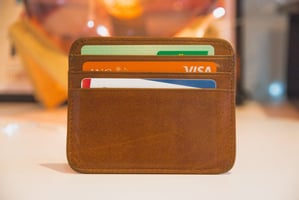Charitable giving in Australia has been higher in 2021 than it has been in the past decade, which...
Bank Account vs Credit Card for Direct Debit: Which One Is Better?
As a business owner, direct debits can make your life easier by automating your payment collection. It also keeps your customers happy because they don’t have to keep manually paying invoices. If you’d like a detailed guide on how direct debits work, how to set them up and more, check out our detailed blog post How To Setup Direct Debit Payments For Your Business.
In this article, we’re going to be specifically discussing whether you should set up your direct debits with bank accounts or credit cards, the key differences and the pros and cons of each. If you have any questions or want to set up your own recurring payment system, click here for more info.
What is direct debit and what are the benefits for my business?
Just a quick recap in case you haven’t seen our other posts - direct debits streamline the payment process for both you and your customers, making it a more convenient experience for everyone. A direct debit payment doesn’t just let you manage payments from lots of customers with ease, but you can also adjust the amount and frequency when you need to in just a few clicks.
Once set up, customers give you permission to take money from their account to pay for your service. This money can either come out from a bank account or with a credit card payment, which is what we are about to cover. Hopefully after reading, you will know which one is best for your business.
Direct debit payments streamline your money collection and make it a more convenient for both you and your customers.
Direct Debit Via Bank Account
Most of the time, this is the best choice. Bank account direct debits are a great option with basically no downsides.
Pros:
-
A low-cost option for both you and customers.
-
Straightforward set up (either online over the phone)
-
High flexibility for both you and the customer
-
Low risk of late payment because it’s automatically deducted.
-
A user’s bank details rarely expire or get cancelled.
-
High customer protection. You can offer immediate refunds from your bank with no time limit in the event of an incorrect charge.
Cons:
-
If they don’t have money in their bank account at the time they can encounter dishonour fees which can annoy customers.
-
They may prefer to use credit cards either for convenience, getting rewards or just personal preference.
-
Sometimes you can lose a customer if you don’t offer credit card payments (although in our experience this is quite rare, as long as they want your product and you have good customer support).
Credit Card Direct Debit Payments
Setting up a direct debit via credit card is still a good option but it does have some more downsides.
Pros:
The pros are very similar to bank accounts, so from the customer’s perspective it’s basically the same.
-
A low-cost option for both you and customers.
-
Easy online/over the phone set-up.
-
High flexibility for both you and the customer.
-
Customers may prefer to pay via credit card for perceived security, rewards or preference.
-
Low risk of late payment (if their bank account is empty it can’t take any money, vs a credit card that will usually go through).
-
Collect variable payment amounts.
Cons:
These are the main things to keep in mind for your business.
-
High cost per payment- usually around 3% plus fees.
-
Roughly 5-10% of credit card payments fail each month due to customer's cards expiring or being cancelled.
-
If a card does expire, it creates unnecessary work for members having to update their details and may result in their membership lapsing. This may result in staff time ‘chasing’ the customers to update their details, as well as potential dishonour fees. As a business, direct debit via bank account is usually the better option.
How to choose which option is best for your business.
From a business perspective, bank direct debit would be the preferred way to go. However, if you don't have your customer’s preferred payment options you can lose potential customers. While offering credit card direct payments may not seem as attractive, it might gain customers who prefer it.
Cue the Old El Paso… Why not have both?
You may find that having both options but encouraging your customers to choose direct debit is the most beneficial. That way you get the benefits of bank account direct debits but you don’t lose out on any potential sales if they prefer credit cards.
How to set up your direct debits quickly, easily and safely.
If you’d like to set up your direct debits for business, get in touch with our friendly team. We have some of the lowest fees on the market, the best security available and a wider range of services that other direct debit providers don’t offer. Getting started is easy!
1. Create a PayChoice account. Sign up by contacting our friendly team. Then, we create your account and the direct debit request form for you to send customers.
2. Send your direct debit request form to customers. Once they complete this, you send their direct debit authority to us so you can start withdrawing money directly from their bank account.
3. Customise payment amount and frequency. Once authorised, you can customise the frequency and amount to be deducted from your customer’s account and choose the day it will occur.
Once you have set up a direct debit services system set up you can wave goodbye to chasing up customers. It’s really that easy! Enquire today and see how PayChoice can transform your business.



